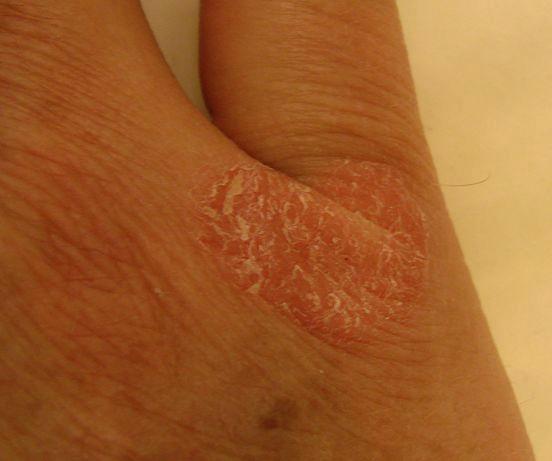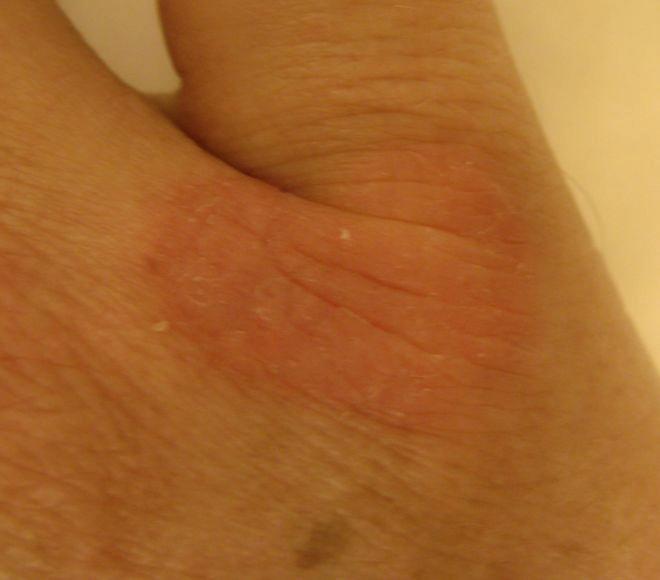"Pico Skin Relief" - Not Sold In The USA
5731 Lexington Drive, Parrish, FL 34219 USA http://www.pico-medicine.com
Phone: 336 306-0193 Email: donwilshe@biobased.us
Return to Home Page
"Pico Skin Relief" vs. Plaque Psoriasis Gone in 24 Hours
Mr. Jordan has suffered for 12 years with Plaque Psoriasis on his hands, knees and elbows. The Itching from the Psoriasis was constant and he litteraly scartched his sores until they bleed. He had tried dermotologist for years with no results. So he came to me about my case study work on the product of Moisturizer for Psoriasis as the last resort.
He provided below the before and after Plaque Psoriasis pictures of the application of a Biobased Cream made of plant matter in support of the President Obama Executive order of Biobased Bio-Preferred Products to eliminate our dependency on foreign imported oil on his hands, knees and Elbows.
After getting the Moisturizer for Plaque Psoriasis 12/17/2014 he reported on 12/18/2014 all the Plaque Psoriasis on his entire body was gone. Mr. Jordan said not only does the area look better, I no longer have the broken, dry, itching, or bloody skin on my hands, elbows and knees.
Above Before the Use of the "Pico Skin Relief" Plaque Psoriasis Moisturizer 12/17/2014
Above After the Use of the "Pico Skin Relief" Plaque Psoriasis Moisturizer 12/18/2014
The 7 Types of Psoriasis Described.
Knowing which kind of psoriasis you have helps you make a treatment plan. Most people only have one type at a time. Sometimes, after your symptoms go away, a new form of psoriasis will crop up in response to a trigger.
Plaque Psoriasis
This is the most common type. About 8 in 10 people with psoriasis have this kind. You may hear it called it "psoriasis vulgaris." Plaque psoriasis causes raised, inflamed, red skin covered with silvery, white scales. These patches may itch and burn. It can appear anywhere on your body, but often pops up in these areas: Elbows, Knees, Scalp, Lower back.
Guttate Psoriasis
This type often starts in children or young adults. It happens in less than 2% of cases. Guttate psoriasis causes small, pink-red spots on your skin. They often appear on your: Trunk, Upper arms, Thighs. Scalp, Triggers include: Upper respiratory infection such as strep throat or tonsillitis, Stress, Skin injury, Certain drugs such as beta-blockers, This type of psoriasis may go away within a few weeks, even without treatment. Some cases, though, are more stubborn and require treatment.
Inverse Psoriasis
This type shows up as areas that are bright red, smooth, and shiny, but don't have scales. It's usually found in these locations: Armpits, Groin, Under the breasts, Skin folds around the genitals and buttocks, Inverse psoriasis may worsen with sweating and rubbing. A buildup of yeast may trigger it.
Pustular Psoriasis
This kind of psoriasis is uncommon and mostly appears in adults. It causes pus-filled bumps (pustules) surrounded by red skin. These may look infectious, but are not. This type may show up on one area of your body, such as the hands and feet. Sometimes it covers most of your body, which is called "generalized" pustular psoriasis. When this happens it can be very serious, so get immediate medical attention.
Generalized pustular psoriasis can cause: Fever, Chills, Nausea, Fast heart rate, Muscle weakness, Triggers include: Topical medicine (ointments you put on your skin) or systemic medicine (drugs that treat your whole body), especially steroids Suddenly stopping systemic drugs or strong topical steroids that you used over a large area of your body Getting too much ultraviolet (UV) light without using sunscreen, Pregnancy, Infection, Stress, Exposure to certain chemicals
Erythrodermic Psoriasis
This type is the least common, but it's very serious. It affects most of your body and causes widespread, fiery skin that appears burned. You might also have: Severe itching, burning, or peeling, A faster heart rate, Changes in body temperature, If you have these symptoms, see your doctor right away. You may need to get treated in a hospital. This type of psoriasis can cause severe illness from protein and fluid loss. You may also develop an infection, pneumonia, or congestive heart failure. Triggers include: Suddenly stopping your systemic psoriasis treatment, An allergic drug reaction Severe sunburn, Infection, Medications such as lithium, anti-malarial drugs, cortisone, or strong coal tar products Erythrodermic psoriasis may also happen if your psoriasis is hard to control.
Nail Psoriasis
Up to half of those with psoriasis have nail changes. This is even more common in people who have psoriatic arthritis, which affects your joints. Common symptoms include: Pitting of your nails, Tender, painful nails, Separation of the nail from the bed Color changes (yellow-brown), Chalk-like material under your nails, You're also more likely to also have a fungal infection.,
Psoriatic Arthritis
This is a condition where you have both psoriasis and arthritis (joint inflammation). In 70% of cases, people have psoriasis for about 10 years before developing psoriatic arthritis. About 90% of people with it also have nail changes. The most common symptoms are: Painful, stiff joints that are worse in the morning and after rest, Sausage-like swelling of the fingers and toes, Warm joints that may be discolored.
Return to Home Page
<